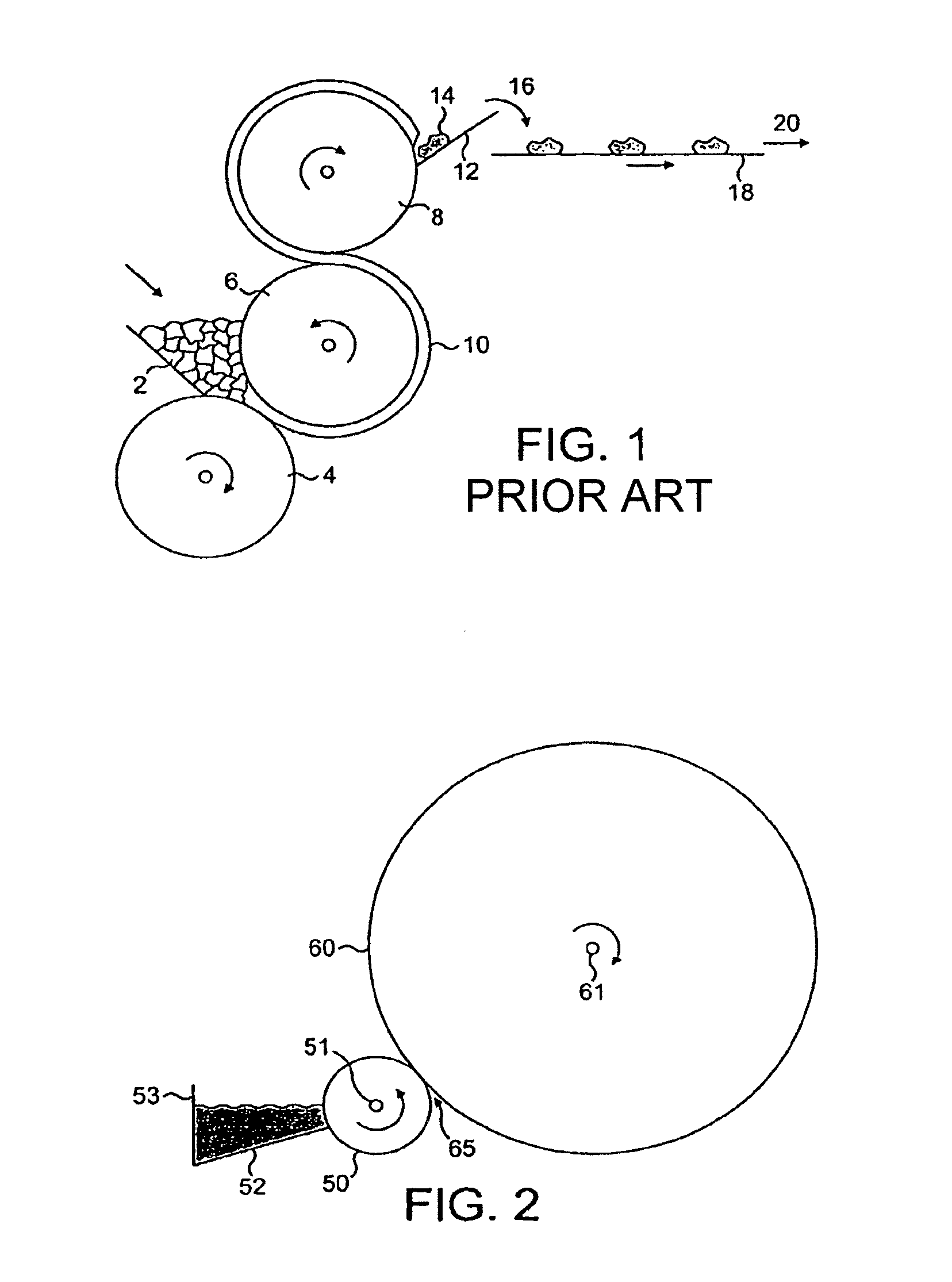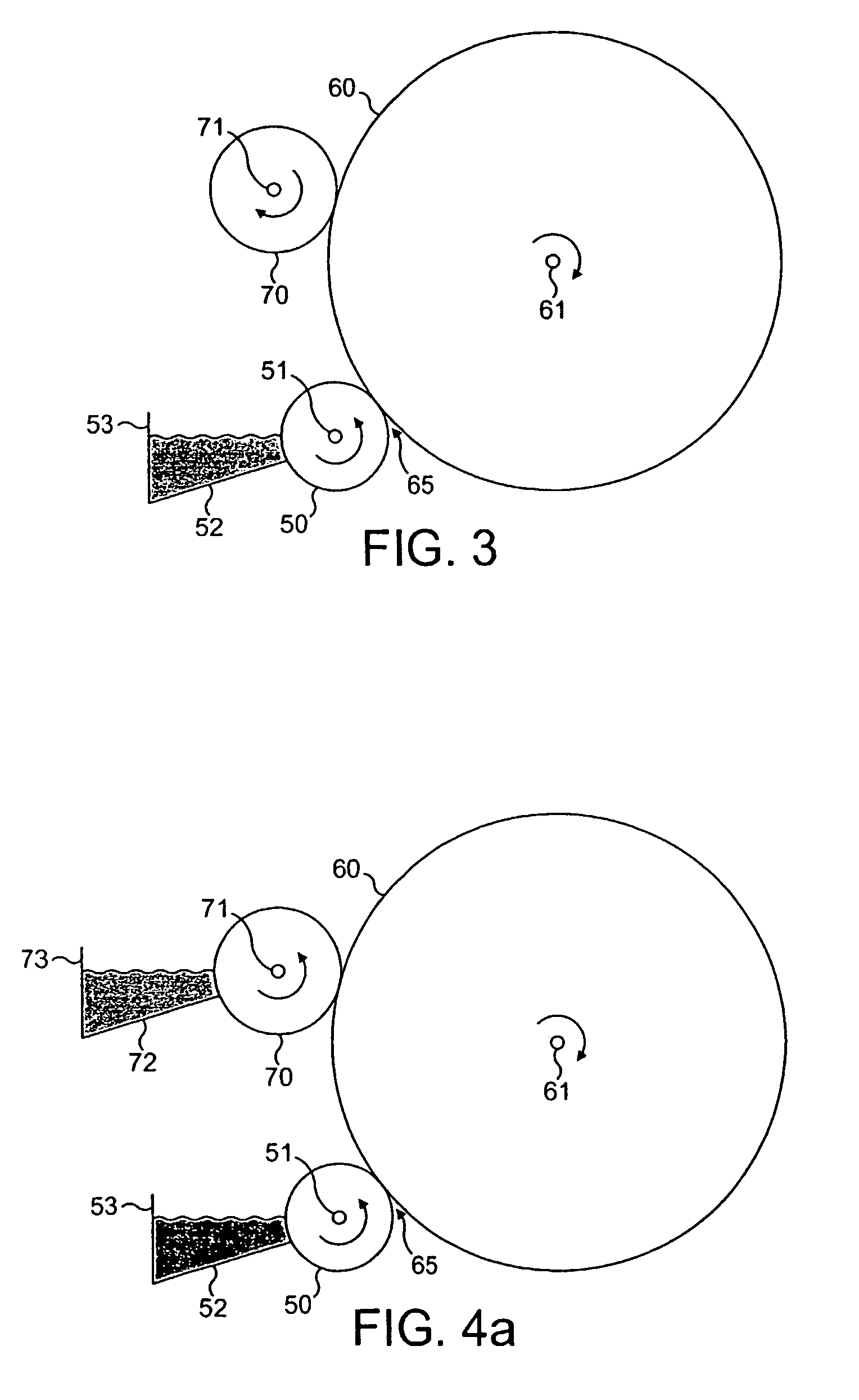Thin film forming
- Summary
- Abstract
- Description
- Claims
- Application Information
AI Technical Summary
Benefits of technology
Problems solved by technology
Method used
Image
Examples
Embodiment Construction
[0078]As described above, FIG. 1 shows a general arrangement for the preparation of a wrinkled, partially compressed bar of confectionery according to a prior art process. Some of the disadvantages of this system are discussed above.
[0079]While the examples below refer specifically to the transfer of chocolate from the first roll to the second roll and subsequently to the formation of layered confectionery products, it will be appreciated that the present invention is not limited to use of chocolate alone. As set out above, the present invention is applicable to all human and pet foodstuffs which are liquid or sufficiently fluidic or plastic on application to be easily formed into a regular film of plasticised solid. In addition, any secondary components added to the film on the second roller might be solid or liquid as appropriate. Examples of possible secondary components for a chocolate film include creams (e.g. praline, coffee, mint, white, etc.), crushed nuts (e.g. almonds, haz...
PUM
 Login to View More
Login to View More Abstract
Description
Claims
Application Information
 Login to View More
Login to View More - R&D
- Intellectual Property
- Life Sciences
- Materials
- Tech Scout
- Unparalleled Data Quality
- Higher Quality Content
- 60% Fewer Hallucinations
Browse by: Latest US Patents, China's latest patents, Technical Efficacy Thesaurus, Application Domain, Technology Topic, Popular Technical Reports.
© 2025 PatSnap. All rights reserved.Legal|Privacy policy|Modern Slavery Act Transparency Statement|Sitemap|About US| Contact US: help@patsnap.com



